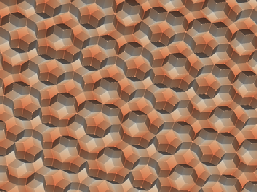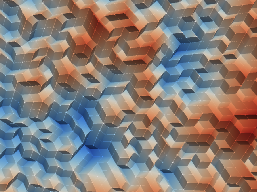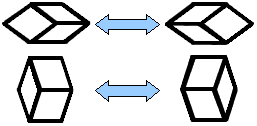Roughened Penrose Tiling


The vertices of a common 2-rhombii Penrose Tiling can be represented by 5 integers, whose sum can be defined to give each vertex a z-value. For the Penrose tiling, the sum is constrained to the range [1,4]. The two-dimensional tiling then becomes a jagged, yet still somewhat flat surface in three dimensions (top figure). Through a series of random hexagon flips(*) the tiles are rearranged resulting in violations of the Penrose matching rules. The resulting tiling is random, but local 5-fold symmetry remains (bottom figure). The sum of the indices is no longer constrained to [1,4] and the surface becomes rough.
(*) The 2-rhombii Penrose tiling has two types of hexagons. One has two "fat" rhombii plus one "skinny" rhombus. The other has two skinny rhombii and one fat rhombus. Rearranging the interior connections breaks the matching rules but preserves the exteriof shape of the hexagon. See below.

Source: Steve Johnson
